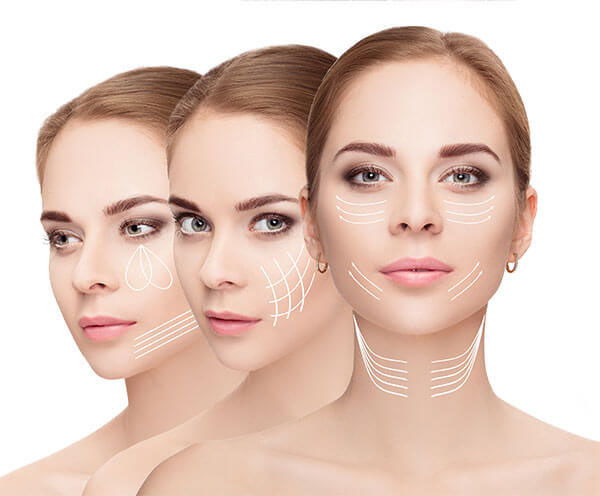
Plasma lift
the healing process
Congratulations on choosing your Plasma tightening treatment to improve skin texture, wrinkles and laxity.
DAY 1
- Try to lay propped up with pillows. Some discomfort is normal. The swelling will likely be worse in the mornings and lessen towards the evening. If you have had eye treatments, you may find it difficult to open your eyes the following morning, however it will subside throughout the day. It will feel like a bad sunburn.
DAY 2
- The swelling typically peaks by day 2. Swelling can also spread to the under eye area, DON’T PANIC, this is perfectly normal. The upper and lower eye are all connected, therefore the fluids from the upper eye will drain to the lower eye area. This too shall pass.
DAY 3
- You may notice an improvement in the swelling and the “dots” will start to crust/scab over. The scabs must not be picked, allow them to fall off on their own. Your level of discomfort will have subsided a bit. For those who experienced the under eye swelling, this will still be present.
DAY 4
- Some mild residual swelling may still be present on the upper eyelids. Discomfort should diminish.
DAY 5
- Swelling should be complete and scabs may still be present. Use Aquaphor to protect if scabs are accidentally getting rubbed off prematurely.
DAY 6-10
- You are patiently waiting for the remaining scabs to fall off on their own. It is normal for the new skin under the scabs to be pink or red and peeling as the healing process continues.
WEEKS 2-8
- After scabs fall off, you may have tender, peeling or textured skin for a few days or weeks. Once your skin is no longer tender, you may safety use a non-physical, gentle, enzyme exfoliant to slough off peeling skin. After scabs fall off, you may also use healing serums, lotions and make up. Each day, your skin will progressively return to its’ original coloration and texture.
Remember it will take 12 weeks for healing process to cycle through completely and for skin to be refreshed and for healing to complete. (You may continue to see results for up to 6 months.)
Depending on laxity and desired results, you may want to have multiple treatments on the same area. Areas may be treated every 3 months to let the collagen heal and turn over.
After-Care
- You may resume most activities immediately after any treatment( with the exception of high intensity cardio), but you may not look your best during the healing process. Clients usually have 4 - 10 days of dots (5 - 7 days of dots on average), usually followed by some redness that will gradually diminish. Depending on your where your treatment is and your desired level of privacy, you may want to minimize in-person appointments until your dots fall (approximately a week).
- Do not pick scabs! Removing the scabs prematurely may result in scarring and discoloration. Allow scabs to come off on their own. This will ensure the best possible result and avoid scarring, hyperpigmentation and infection. If you feel the scabs are accidentally being rubbed off prematurely, then protect them with by covering them with Aquaphor to prevent falling off too early. The longer the scabs stay put the longer the skin has a chance to heal itself with the protection of the scab.
- Ice the treated area using a clean towel to cover the ice pack each use. Alternate 10 minutes on and off for up to 1 hour for the first 2 days.
- Keep the treated area clean using a mild, unscented, alcohol free cleanser. PAT DRY- KEEP DRY!
- Ice, anti-inflammatory and anti-histamine medicines can also help with swelling in the early healing phases.
- Do not apply makeup (even mineral makeup) until the scabbing has fallen off completely. This is to avoid infection or disrupting the scabs prematurely.
- IMPORTANT! Avoid sun exposure and tanning beds to the treated area. Once the scabbing process is complete, always apply broad spectrum SPF 50 or higher to the area for a minimum of 3 months after your last treatment. This skin is still healing and can easily become damaged by any UV rays and may cause hyperpigmentation and/or premature aging.
- Dry healing is preferred but if your scabs become unbearably itchy, then you may safely apply the post treatment balm I provide up to three times per day to help manage itchy sensation. Icing also helps manage itchiness.
- Taking collagen, vitamin c and L-lysine supplements over the course of your healing process can give your immune system and collagen production a boost.
- Avoid smoking.
- Avoid shaving over any area that has been treated until the skin has fully healed.
- Exercising right after a treatment is not recommended because any heat, steam or sweat can add to inflammation. Do not use any pools, hot tubs or saunas until after the dots have fallen off and your skin returns to a more normal state.
- After the dots have fallen off on their own , you may use makeup to cover any redness. If your skin is ready and not too tender, using a gentle enzyme exfoliant can help to create a smoother surface from the peeling that is typical at this stage of healing.
- Do not use anything harsh on your skin (like acids, peels or physical exfoliants) until you have reached the 8 weeks post treatment healing point. Use common sense, if it doesn’t feel good, then don’t do it.